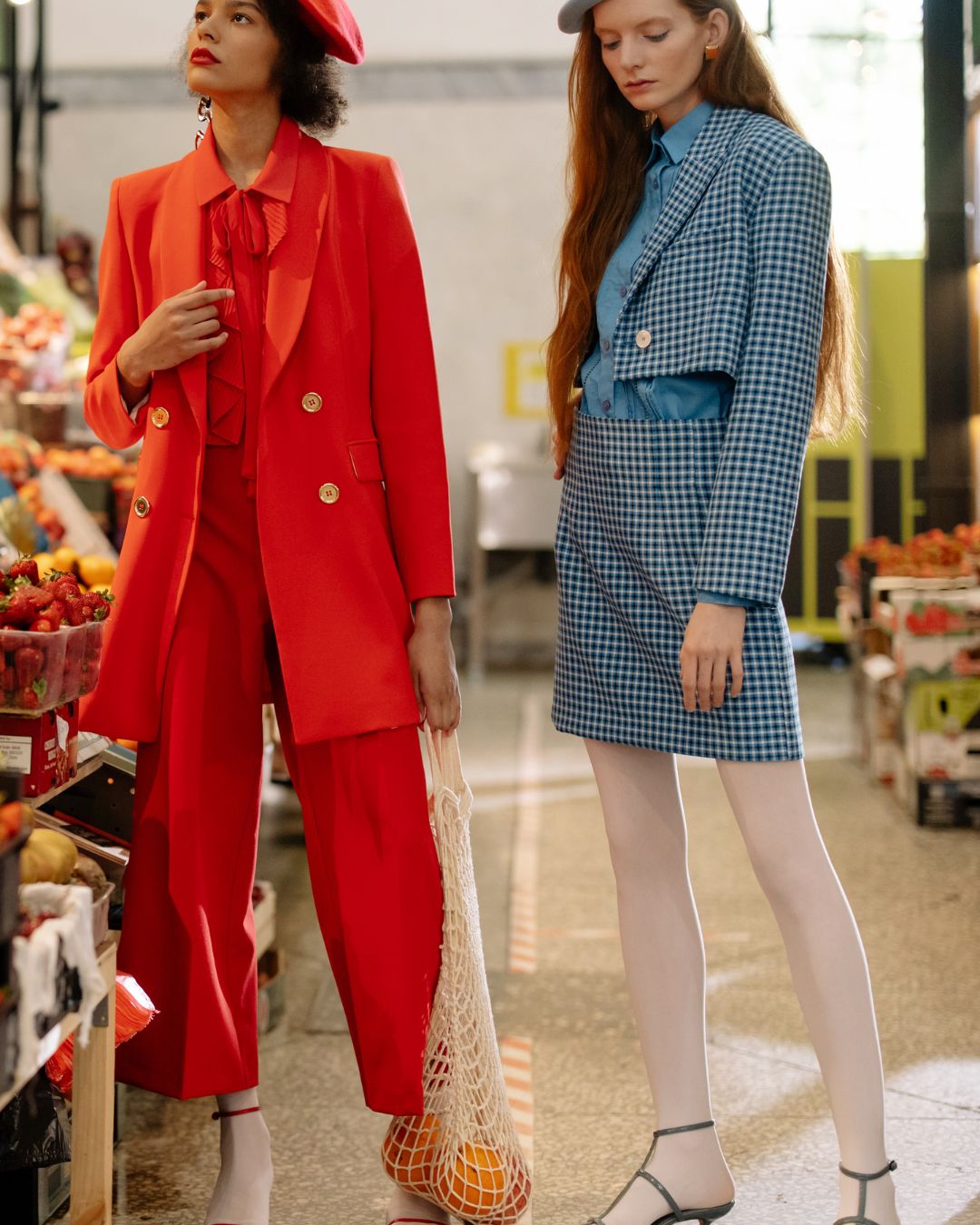

Understanding consumer preferences and trends in the fashion industry is super crucial for analyzing consumer behavior in fashion marketing. It helps brands to know what their customers actually want and need, so they can create products that will sell like hotcakes.
Gain access to additional information browse through it. Without understanding these preferences and trends, companies might end up making items that nobody wants or likes. This could lead to major losses in sales and profits, which no business wants to deal with.
By paying attention to what consumers are into right now, businesses can stay ahead of the game and keep their customers happy. This means keeping an eye on social media, reading fashion magazines, and even talking to shoppers directly.
In conclusion, knowing what's popular with consumers is key for success in the fashion industry. So let's all do our part to stay informed and make sure we're giving people what they really want!
When it comes to consumer behavior in fashion marketing, there are many factors that can influence a person's purchasing decisions. These factors can range from personal preferences to external influences such as social media and trends.
One of the most important factors is the individual's own taste and style. People often choose clothing and accessories that reflect their personality and make them feel confident and comfortable. However, this factor can be influenced by external sources like celebrities or influencers who promote certain brands or styles.
Another key factor is price. Many consumers are price-sensitive and will only purchase items that fit within their budget. Discounts, promotions, and sales can also have a significant impact on purchasing decisions.
Social media plays a major role in shaping consumer behavior in fashion marketing. Platforms like Instagram and TikTok allow users to discover new brands and trends, making it easier for companies to reach potential customers.
In addition, cultural norms and values can also influence consumer purchasing decisions in fashion. For example, some people may prefer sustainable or ethical brands over fast-fashion retailers due to environmental concerns.
Overall, understanding the various factors that influence consumer behavior in fashion marketing is crucial for businesses looking to attract customers and increase sales. By analyzing these factors, companies can tailor their marketing strategies to better meet the needs and desires of their target audience.
Social media has had a major impact on fashion marketing strategies in recent years.. There are both challenges and opportunities in integrating social media into these strategies.
One of the challenges is keeping up with the constantly changing landscape of social media platforms.

Posted by on 2024-05-09
In the fashion industry, trends in influencer marketing are constantly evolving with emerging platforms and technologies playing a crucial role.. These new tools are shaping the future of how brands connect with their target audience through influencers.
With social media platforms like Instagram, TikTok, and YouTube gaining popularity among consumers, influencers have become a powerful force in driving brand awareness and engagement.

Posted by on 2024-05-09
Consumer attitudes towards sustainable and ethical fashion brands play a crucial role in today's fashion industry.. Many consumers are becoming more conscious about the impact of their purchasing decisions on the environment and society.

Posted by on 2024-05-09
Branding and advertising play a crucial role in shaping consumer perceptions in the world of fashion marketing. Without these key elements, consumers would not be able to distinguish between different brands and products. The use of branding helps to create a unique identity for a company or product, while advertising helps to promote this identity to consumers.
When consumers see a brand that they recognize and trust, they are more likely to purchase products from that brand. This is because branding creates a sense of familiarity and reliability for consumers. In addition, advertising helps to reinforce these perceptions by presenting the brand in a positive light through various marketing channels.
For example, when a consumer sees an advertisement for their favorite clothing brand on social media, they may feel excited and eager to make a purchase. This is because the advertisement has successfully influenced their perception of the brand as being trendy and high-quality.
In conclusion, branding and advertising are essential tools in influencing consumer behavior in fashion marketing. Without these elements, companies would struggle to connect with their target audience and drive sales. By using effective branding strategies and engaging advertising campaigns, companies can shape consumer perceptions in a way that ultimately benefits their bottom line.

When it comes to consumer behavior analysis in fashion marketing, case studies on successful marketing strategies can provide valuable insights. By examining how consumers think and act when making purchasing decisions, marketers can better understand their target audience and tailor their strategies accordingly.
One example of a successful marketing strategy based on consumer behavior analysis is the use of social media influencers. These individuals have a strong influence over their followers' purchasing decisions, as they are seen as trustworthy sources of information. By partnering with influencers who align with their brand values, fashion companies can reach a larger audience and increase sales.
Another example is the implementation of personalized marketing tactics. By analyzing consumer data and preferences, companies can create targeted campaigns that speak directly to individual customers. This personalization creates a stronger connection between the brand and the consumer, leading to increased loyalty and repeat purchases.
In conclusion, by studying consumer behavior and implementing effective marketing strategies based on this analysis, fashion companies can improve their overall performance and stand out in a competitive market. It is essential for brands to continuously adapt to changing consumer preferences and trends in order to stay relevant and appeal to their target audience effectively.
Social media and digital marketing have a huge impact on consumer engagement in the fashion industry. These platforms allow brands to reach a wider audience and connect with consumers on a more personal level. Without social media, it would be much harder for companies to engage with their target audience.
One of the biggest benefits of using social media for marketing is that it allows brands to create more authentic relationships with their customers. Instead of just pushing out advertisements, companies can interact with consumers through comments, messages, and likes. This creates a sense of community around the brand and helps build loyalty among customers.
In addition, digital marketing allows companies to track consumer behavior in real-time. By analyzing data from social media platforms and online ads, brands can better understand what their customers want and tailor their marketing strategies accordingly. This not only improves engagement but also increases sales and customer satisfaction.
However, it's important to note that social media and digital marketing are not without their drawbacks. With so many brands vying for attention online, it can be difficult for companies to stand out from the crowd. Additionally, some consumers may feel overwhelmed by the constant bombardment of advertisements on their feeds.
Overall, while social media and digital marketing have revolutionized the way companies engage with consumers in the fashion industry, it's important for brands to strike a balance between promoting their products and creating meaningful connections with their audience. By doing so, they can ensure long-term success in an increasingly competitive market.

When it comes to analyzing consumer behavior in fashion marketing, future trends are constantly evolving. It's important for marketers to stay ahead of the curve and understand what drives individuals to make purchasing decisions. By studying patterns and tendencies in how consumers interact with brands, companies can better tailor their strategies to meet the needs and desires of their target audience.
One key aspect of consumer behavior analysis is recognizing the shift towards online shopping. With the rise of e-commerce platforms and social media influencers, customers are increasingly turning to digital channels to discover new products and trends. Marketers must adapt their approaches to reach these tech-savvy shoppers who value convenience and instant gratification.
Another trend that is shaping consumer behavior in fashion marketing is the growing importance of sustainability and ethical practices. More and more consumers are prioritizing eco-friendly options and supporting brands that align with their values. This presents an opportunity for companies to differentiate themselves by promoting transparency in their supply chain and showcasing their commitment to social responsibility.
In conclusion, keeping up with future trends in consumer behavior analysis is crucial for fashion marketers looking to stay competitive in a rapidly changing industry. By staying attuned to shifting preferences and adopting innovative strategies, companies can build stronger connections with their target audience and drive long-term success.